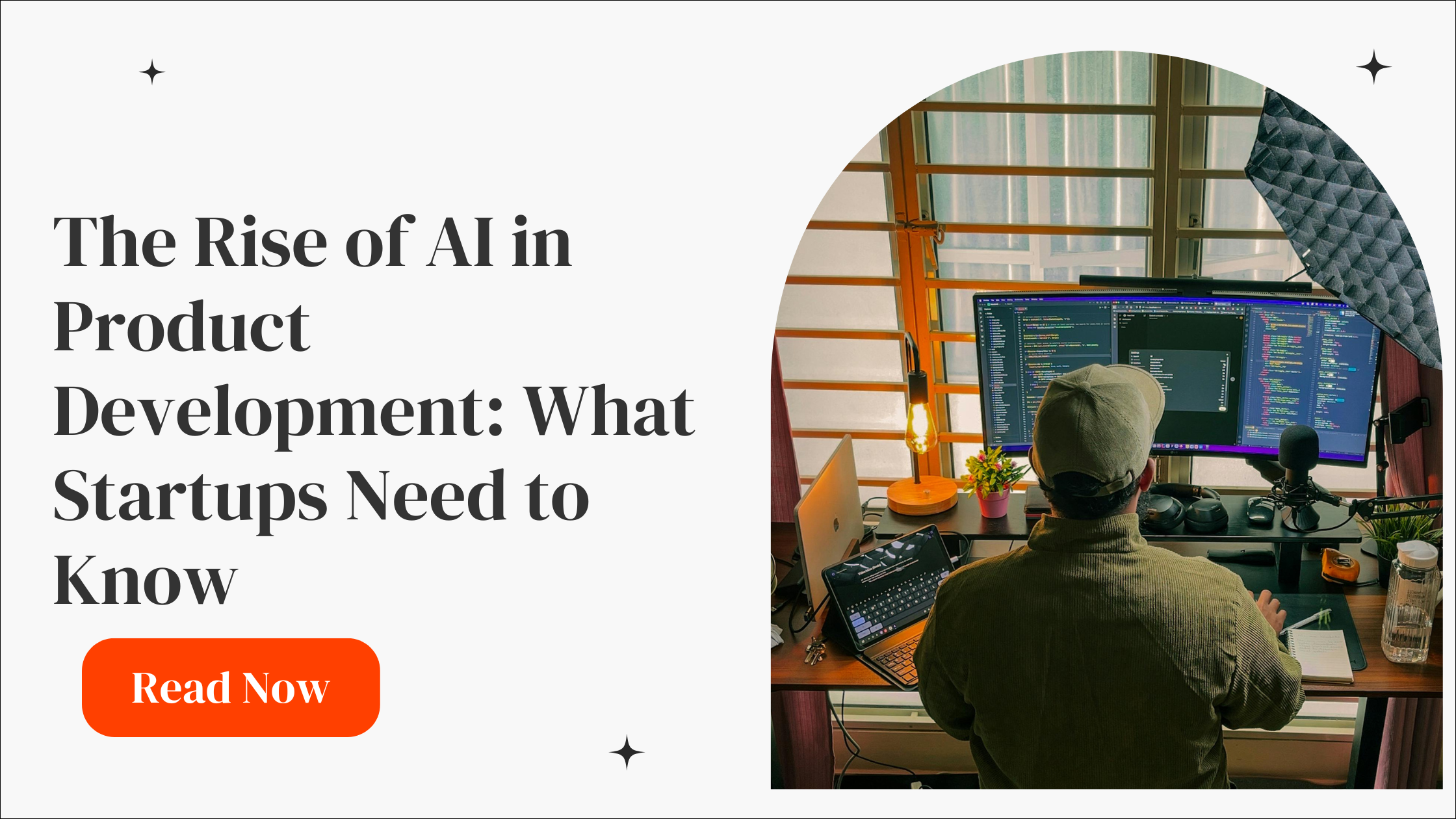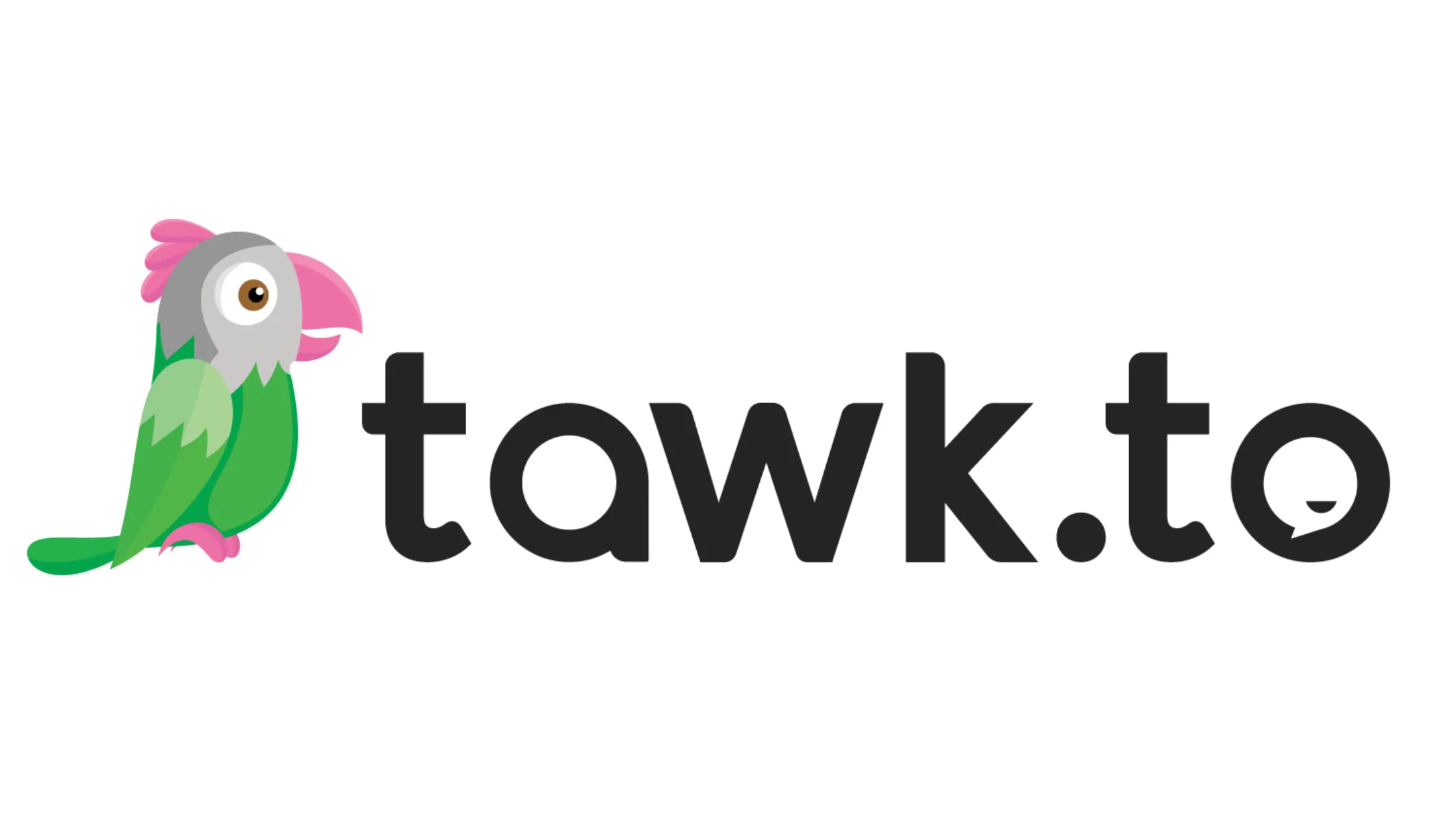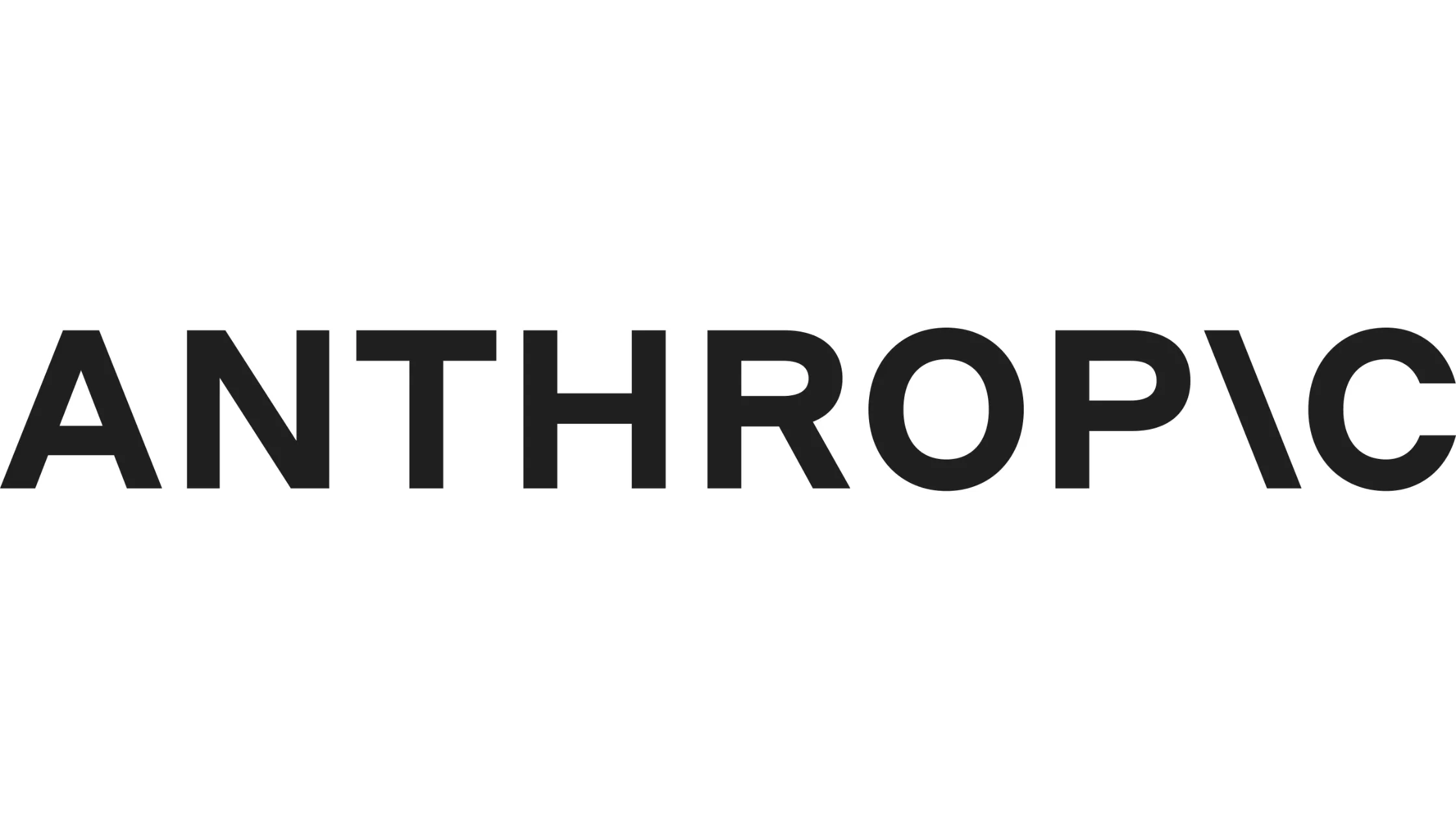
From Idea to MVP: A Founder's Guide to Rapid Prototyping
Learn how rapid prototyping helps startup founders quickly turn ideas into MVPs, save costs, and gather valuable user feedback for success.
So, you’ve got a big idea for your startup. Awesome! Now, you’re wondering, “How do I take this concept and actually turn it into something real?” The answer: rapid prototyping. In today’s fast-moving startup world, rapid prototyping is your best friend. It's the process of quickly building a functional version of your idea, allowing you to test and validate it with real users before committing too many resources. For first-time founders, this can sound intimidating, but trust me, as someone who’s been there, it’s the key to de-risking your startup and setting yourself up for success.
Let’s break down the process and why it’s so important for founders like you to focus on prototyping early. I'll also share some insights from Horizon Labs' experience helping founders like yourself take an idea from paper to a tangible MVP (Minimum Viable Product) faster and cheaper than you might think.
What is Rapid Prototyping?
From Concept to Clickable Prototype
Rapid prototyping is all about moving quickly. The goal isn’t to build a perfect, fully-fledged product from the start. Instead, you're creating a simplified version that includes only the core functionality—enough to show users, investors, or stakeholders how it works. Think of it as a "rough draft" of your product.
Here’s how it typically works:
- Define your idea – What problem are you solving, and for whom?
- Sketch it out – Start with wireframes or flowcharts to visualize your idea.
- Build a simple version – Using tools like Figma, Sketch, or even paper mockups.
- Test with real users – Gather feedback early and often.
- Iterate quickly – Based on feedback, refine your prototype until you feel confident to start development.
The beauty of this process is that it gives you flexibility. If you discover something doesn’t work, it’s easy to change direction without feeling like you’ve wasted time or money.
Why Should Founders Care About Rapid Prototyping?
Avoiding the “Build It and They Will Come” Trap
One of the biggest mistakes I see first-time founders make is jumping straight into development without validating their idea. I've been there too, back when I was co-founding Kidsy and Cuboh. We thought we knew exactly what users wanted, only to realize (sometimes painfully) that we were wrong. That’s where rapid prototyping comes in.
Why is it so crucial?
- It saves time and money. Building a prototype is much cheaper and faster than developing a full-fledged product, especially when you find out that features you thought were necessary aren’t what users want.
- It helps you gather real feedback. Instead of guessing what users need, you’ll get data-driven insights to guide your product decisions.
- It impresses investors. A working prototype shows that you’re serious and can execute, increasing your chances of securing early-stage funding.
Tools for Rapid Prototyping
Prototyping Tools You Can Start Using Today
You don’t need to be a technical founder to create a prototype. These days, there are tons of tools that allow even non-tech founders to build something tangible without writing a single line of code. Here are some of my go-to tools:
- Figma – Perfect for designing interfaces and building clickable prototypes.
- InVision – Great for turning static designs into interactive, clickable prototypes.
- Balsamiq – A super easy-to-use wireframing tool for low-fidelity designs.
- Marvel – Another excellent option for wireframing and prototyping.
- Webflow – If you want to go one step further and actually build a website or web app without code, this is a powerful tool.
At Horizon Labs, we often start with tools like these to help founders quickly visualize their ideas, get feedback, and refine the concept before moving into full development. It keeps costs low and helps us avoid unnecessary iterations later on.
Steps to Build a Prototype Fast
Step 1: Focus on Core Features
When you’re building your prototype, resist the urge to include every feature you can think of. Your goal is to validate your core idea. Ask yourself:
- What’s the one thing my product absolutely needs to do for users?
- Can I remove anything that isn’t essential at this stage?
At Horizon Labs, when we worked on Flair Labs’ voice AI agents, we started with just the core functionality: Could the AI agent interact with users effectively? Once we nailed that, we expanded into more advanced features.
Step 2: Build a Clickable Prototype
Once you’ve defined your core features, use tools like Figma or InVision to create a clickable prototype. This doesn’t require coding and allows you to show users what the final product might look and feel like.
Step 3: Test with Real Users
The next step is testing. Get your prototype into the hands of real users. Ask them:
- Do they understand how to use it?
- Does it solve their problem?
- What’s missing, or what could be improved?
Step 4: Iterate and Refine
Based on user feedback, make adjustments to your prototype. The goal here is to refine your idea without jumping into full-scale development too soon. This cycle of building, testing, and refining is what sets successful startups apart.
Real-World Example: Horizon Labs' Work with Yura Health
When we worked with Yura Health, the founder came to us with a big idea but no tech background. We started with rapid prototyping, helping them visualize their concept through wireframes and clickable mockups. This not only helped them attract early-stage investors but also gave them the confidence to move forward with development, knowing they were building something users actually needed.
By the time we got to building their MVP, they had already iterated several times based on user feedback, which meant fewer costly changes down the line. This is the power of rapid prototyping in action.
Avoiding Common Mistakes
Over-Engineering the Prototype
One mistake I often see is founders treating the prototype like the final product. It doesn’t have to be perfect—it just needs to work well enough to test your core assumptions. Focus on speed and functionality, not perfection.
Not Testing with Real Users
It’s tempting to keep your idea to yourself until it’s “perfect.” But remember, your idea will never be perfect. The earlier you can get feedback from potential users, the better. Don’t waste time building features no one wants.
How to Choose the Right Team for Rapid Prototyping
Why You Need the Right People on Board
One of the most critical decisions a founder can make is choosing the right team to handle rapid prototyping and eventual product development. The truth is, a great idea can fall flat if you don’t have the right people executing it. As someone who’s both built and scaled multiple startups, I can’t stress enough the importance of having skilled, reliable partners in your corner. The stakes are high when it comes to time and budget, and every dollar counts for early-stage startups.
Here’s what to look for when selecting a prototyping partner:
- Experience with Early-Stage Startups – It’s essential to work with teams that understand the unique challenges of early-stage ventures. At Horizon Labs, we’ve worked with many startups from accelerators like Y Combinator, so we understand the fast pace and constant pivots required.
- Technical Expertise – Look for developers who are not just coders but problem-solvers. Whether it’s using the latest AI tools or building secure, scalable cloud infrastructures, your team should know how to handle the tech that suits your needs.
- Clear Communication – Don’t underestimate the importance of smooth communication. Founders have a lot on their plate, so it’s crucial that the people you work with can break down complex technical details into digestible action plans.
- Proven Track Record – Case studies and testimonials matter. Look for partners who can demonstrate past success in delivering MVPs and products for other startups.
At Horizon Labs, our combination of technical expertise, startup experience, and commitment to transparency has helped us build lasting relationships with founders who come back to us for future projects. We don’t just execute; we guide you through every decision.
Next Steps: What to Do After Prototyping
Turning Your Prototype into an MVP
Once you’ve gone through the rapid prototyping process and feel confident in your concept, the next step is building out your MVP. Remember, the MVP (Minimum Viable Product) isn’t a finished product—it’s the simplest version of your product that can deliver value to your users.
Here are the key steps to turning your prototype into an MVP:
- Prioritize Features – Based on user feedback, decide which features are absolutely essential for the MVP. Everything else can be added later.
- Develop the Core Product – Now it’s time to write code, integrate APIs, and deploy your app or service. This is where having a skilled engineering team like Horizon Labs can make all the difference.
- Continue Testing – Even though your MVP is live, the learning doesn’t stop. Keep gathering user feedback, monitor usage data, and be ready to iterate quickly.
- Plan Your Next Steps – As your MVP gains traction, start planning for the next phase of development, whether that’s scaling up or adding new features based on user demand.
Securing Early Funding
One of the biggest advantages of having a working prototype is that it gives you something tangible to show potential investors. A prototype that’s been tested and refined with real user feedback is far more compelling than a pitch deck alone. It demonstrates that you’re not just an ideas person—you’re someone who can execute.
Investors are always looking for startups that can hit the ground running, and a functional MVP gives them confidence that you’ve de-risked your idea enough to move forward. If you’re thinking about fundraising, make sure you’ve nailed down your user metrics and can clearly articulate the value your MVP brings to the table.
Why Horizon Labs is the Perfect Partner for Building Your MVP
At Horizon Labs, we understand the unique challenges that founders face when it comes to transforming an idea into a functional, market-ready product. Our experience working with early-stage startups in healthtech, AI, marketplaces, and SaaS gives us the insight needed to deliver not just code, but a strategic approach that positions your product for success.
We’ve helped startups like Flair Labs and Yura Health move from rapid prototypes to full-scale MVPs that have impressed investors and scaled successfully in the market. We pride ourselves on delivering fast, high-quality results without the usual engineering headaches that many startups face.
Whether you’re a non-technical founder or a seasoned engineer, we’ll provide the expertise and support to get your MVP built efficiently and effectively. Don’t wait to turn your idea into reality. Contact us today at info@horizon-labs.co or schedule a call at horizon-labs.co/contact to see how we can help you build faster, better, and at a fraction of the cost of hiring a full-time team.
Frequently Asked Questions (FAQs) about MVPs:
Q: What’s the difference between a prototype and an MVP?
A: A prototype is an early model of your product designed to test specific concepts or features. It’s often non-functional or only partially functional, and it's used for gathering feedback from users or stakeholders. An MVP (Minimum Viable Product), on the other hand, is a more developed version with the core features that deliver real value to users. While a prototype helps you refine your idea, the MVP is built to be released to actual users for further validation and scaling.
Q: How long does rapid prototyping usually take for startups?
A: The timeline for rapid prototyping can vary depending on the complexity of the idea, but for most startups, it typically takes 2 to 4 weeks. The goal is to create a functional or visual representation quickly enough to gather user feedback before committing to full development. With experienced teams, like those at Horizon Labs, the process can often be accelerated to meet tight deadlines while maintaining quality.
Q: Can non-technical founders use rapid prototyping effectively?
A: Absolutely. You don’t need to be a technical founder to engage in rapid prototyping. Many tools, like Figma, Balsamiq, or even low-code platforms, are accessible for non-technical founders to create wireframes or interactive prototypes. Additionally, working with a team like Horizon Labs can help non-technical founders by providing the expertise needed to bring their idea to life without getting bogged down in the technical details.
Q: Is rapid prototyping useful for every type of startup?
A: Yes, rapid prototyping is valuable across various industries and startup types, from software as a service (SaaS) platforms to healthtech, AI, and e-commerce. The key is that rapid prototyping allows any startup to test its core assumptions quickly, gather user feedback, and make necessary adjustments before diving into full development. The approach is especially critical for industries where speed and adaptability are essential to success.
Q: How do I know when my prototype is ready to move to MVP development?
A: Your prototype is ready for MVP development once you've validated the core features with real users and addressed the major feedback points. If users understand your product and can navigate it with ease, and if their feedback is largely positive or highlights manageable adjustments, you’re likely ready to move forward. At this stage, the focus shifts to building out those validated features in a way that can support broader use.
Q: What kind of team do I need to build a prototype and an MVP?
A: To build a prototype, you usually need a UI/UX designer, and in some cases, a product manager or business analyst to define the user journey. For an MVP, you’ll need to add experienced software engineers, quality assurance testers, and potentially a project manager to ensure smooth execution. At Horizon Labs, we provide these resources, offering both prototyping and MVP development services tailored to the unique needs of startups, whether you’re tech-savvy or not.
Q: How can rapid prototyping help with fundraising?
A: Rapid prototyping can significantly boost your fundraising efforts by giving potential investors a tangible demonstration of your idea. A clickable prototype or mockup lets them see how your product will work, which is far more compelling than a slide deck. It shows that you're serious about execution and are gathering user feedback before fully committing to development, reducing the perceived risk for investors.
Q: What’s the biggest mistake founders make during the prototyping phase?
A: One of the biggest mistakes founders make is over-complicating the prototype by trying to include too many features. The purpose of rapid prototyping is to focus on the core problem you're solving. Adding unnecessary features at this stage can delay development and muddle the feedback you get from users. Stick to validating your core idea first, and leave additional features for future iterations.
Q: What role does user feedback play in rapid prototyping?
A: User feedback is critical in rapid prototyping. It helps you identify whether your product is solving the right problem, whether users can easily understand and navigate your solution, and which features are actually valuable to your target audience. Without early feedback, you risk building a product that doesn’t resonate with users. That’s why we always recommend multiple rounds of user testing during the prototyping phase.
Q: Can I change my idea during the prototyping phase?
A: Yes, one of the main advantages of rapid prototyping is its flexibility. As you gather user feedback, you may discover that certain features aren’t as valuable as you thought, or that your target market has different needs. Prototyping allows you to iterate quickly and pivot if necessary without the high costs associated with fully developed products.
Q: How does prototyping help me avoid costly mistakes?
A: Prototyping helps you identify flaws in your idea or product early on before investing heavily in development. By focusing on a simplified version of your product, you can gather feedback from real users to see what works and what doesn’t. This allows you to refine your product and avoid building unnecessary features, saving you time and money in the long run.
Q: How detailed does a prototype need to be?
A: A prototype doesn’t need to be highly detailed or perfect. The goal is to provide a visual and functional representation of your core features so that users can interact with it and offer feedback. Depending on the stage you're at, this could range from a simple wireframe to a clickable, semi-functional prototype. It’s about striking a balance between speed and functionality.
Q: Do I need to build the prototype myself, or should I hire someone?
A: Whether you build the prototype yourself or hire someone depends on your skill set and available time. If you’re a technical founder or have experience with prototyping tools, you might be able to create a basic version on your own. However, if you’re focused on other aspects of your business or lack the technical skills, hiring a team like Horizon Labs can ensure your prototype is built quickly and professionally, allowing you to focus on strategy and growth.
Q: How do I know if my prototype is successful?
A: A successful prototype is one that generates useful feedback and validates (or invalidates) your core assumptions. If users understand the product, find value in the features, and can navigate it easily, that’s a positive sign. Even if your prototype reveals problems, that’s still a win because it allows you to fix issues early on. Success isn’t about perfection but rather learning and adapting quickly.
Q: What is the role of design in rapid prototyping?
A: Design plays a crucial role in rapid prototyping as it determines how users will interact with your product. A well-designed prototype ensures that the user experience is intuitive and clear. Even at the prototype stage, focusing on usability and the flow of interactions can provide valuable insights into how users engage with your product. Good design doesn’t have to be complex—it just needs to be effective in conveying the core functionality.
Q: How does rapid prototyping differ from traditional product development?
A: Traditional product development often involves a lengthy, step-by-step process that can take months before users see anything. Rapid prototyping, on the other hand, is focused on speed and iteration. It emphasizes getting a working model in front of users as quickly as possible to gather feedback and make adjustments before proceeding with full-scale development. This approach saves time, reduces risk, and helps ensure you're building the right product from the start.
Q: Can I use the prototype to secure partnerships or clients?
A: Yes, a well-made prototype can be a powerful tool for securing partnerships or early clients. It shows that you’re serious about your idea and gives potential partners something tangible to interact with. Many companies have successfully used prototypes to land early deals, particularly in industries where demonstrating value early on is key to building trust with clients or partners.
Q: How do I ensure my prototype aligns with my business goals?
A: To ensure your prototype aligns with your business goals, it’s important to clearly define the problem you're solving and the target market from the start. This will help guide your design and feature choices during the prototyping phase. Additionally, keep revisiting your business goals throughout the process to make sure you’re building a product that addresses real customer needs and supports your company’s growth objectives.
Q: What are the risks of skipping rapid prototyping?
A: Skipping rapid prototyping can lead to several risks, including building a product that doesn’t resonate with your users, wasting time and money on features that aren’t needed, and missing out on valuable user feedback that could shape your product’s direction. Without a prototype, you’re essentially flying blind, which increases the chance of costly missteps once you begin full-scale development.
Need Developers?
We help companies build ideas into apps their customers will love (without the engineering headaches).
















For Startups & Founders
We've been founders ourselves and know how valuable the right communities, tools, and network can be, especially when bootstrapped. Here are a few that we recommend.

Mistakes to Avoid When Building Your First Product
Learn the key mistakes founders make when building their first product—and how to avoid them for a faster, smoother launch.
Read more
The Rise of AI in Product Development: What Startups Need to Know
Learn how AI is transforming product development for startups. From MVPs to scaling, here’s what founders need to know in today’s AI-driven world.
Read more
No-Code vs. Custom Development: Which is Right for Your Startup?
Weighing no-code vs. custom development? Learn which is right for your startup depending on stage, budget, and product complexity.
Read more
What is Mixpanel?
Learn how Mixpanel helps startups track user behavior to improve products and accelerate growth with clear data-driven insights.
Read more
How Tawk.to Can Boost Your Startup’s Customer Support Game
Learn how Tawk.to can benefit startups by enhancing customer support and engagement. Perfect for early-stage founders!
Read more
Grow Your Startup With Anthropic's AI-Powered Tools
Discover how Anthropic's cutting-edge AI tools can accelerate your startup's success. Learn about their benefits and see why they can be trusted by startups.
Read more
What is Data-Driven VC?
Learn what a data-driven VC means and how such investors can benefit your startup’s growth and fundraising journey.
Read more
What is Blockchain?
A beginner-friendly guide on blockchain for startup founders, covering key concepts, benefits, challenges, and how to leverage it effectively.
Read more
What is Cybersecurity?
Learn cybersecurity basics tailored for startup founders. Understand key risks, best practices, and how to protect your startup from tech threats.
Read more
What is Seedcamp?
Learn what Seedcamp is, how its European seed fund and accelerator program work, and how founders can use its capital, mentorship, and network to scale their st
Read more
What is AngelList?
AngelList is a prime platform connecting startup founders to investors, talent, and resources to accelerate early-stage growth.
Read more
What is 500 Startups?
Learn what 500 Startups (now 500 Global) is, how its accelerator and seed fund work, and when founders should consider it—plus tips for early-stage startups.
Read more.png)